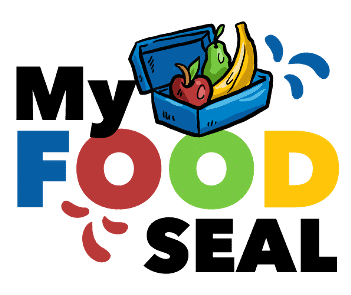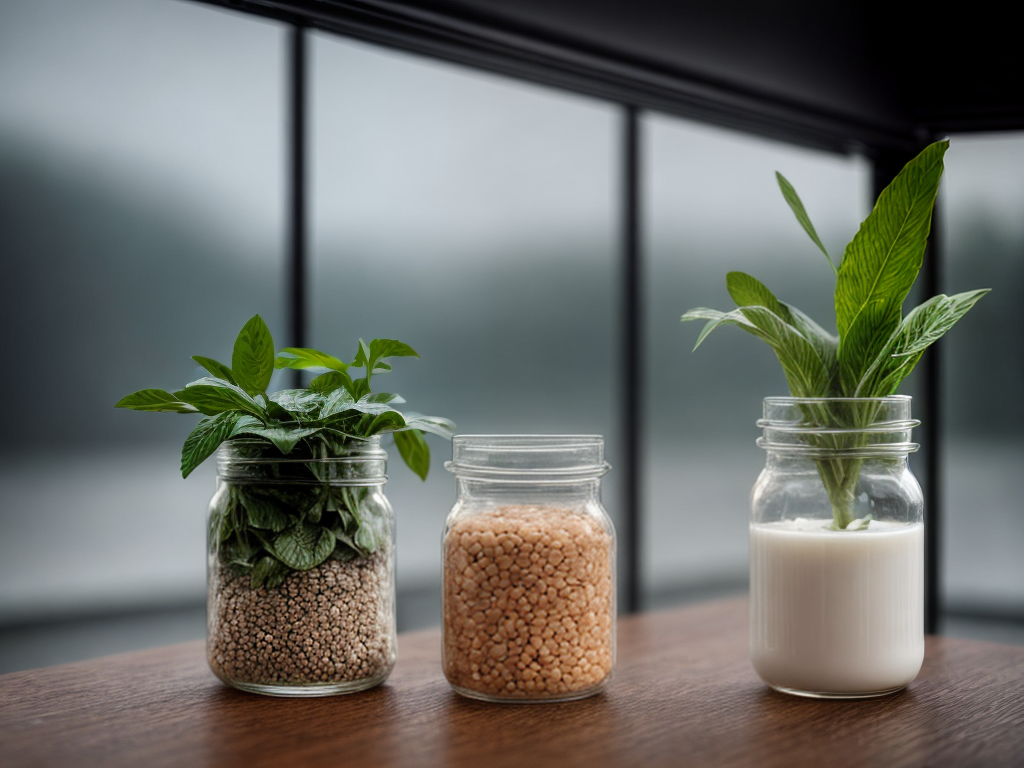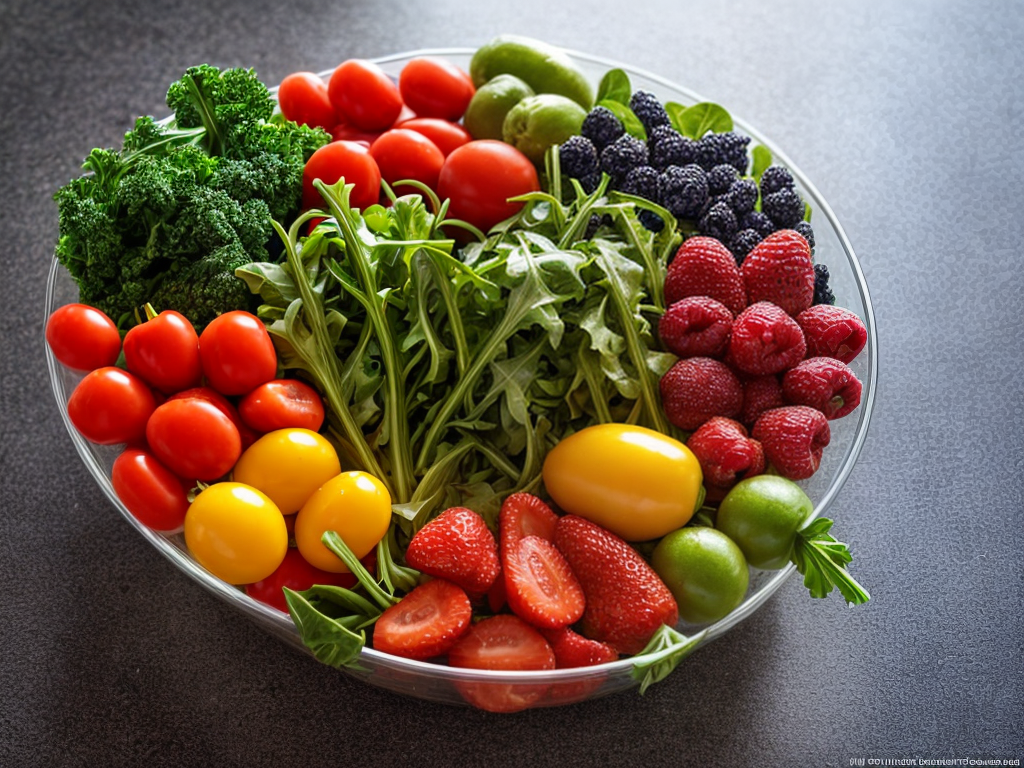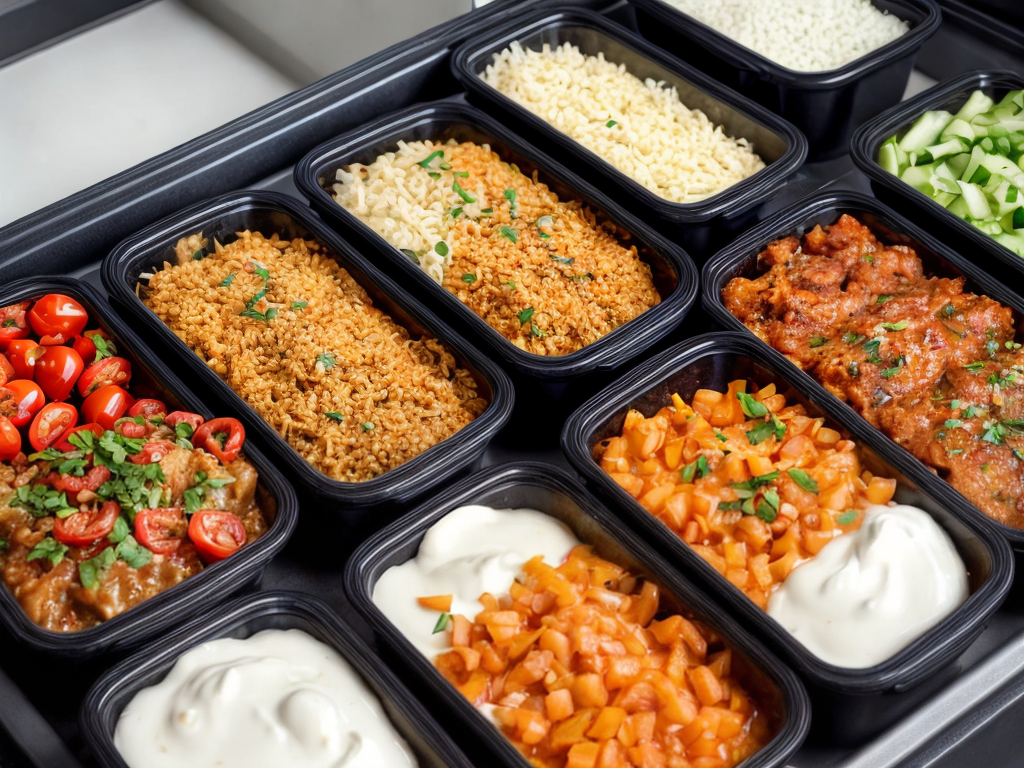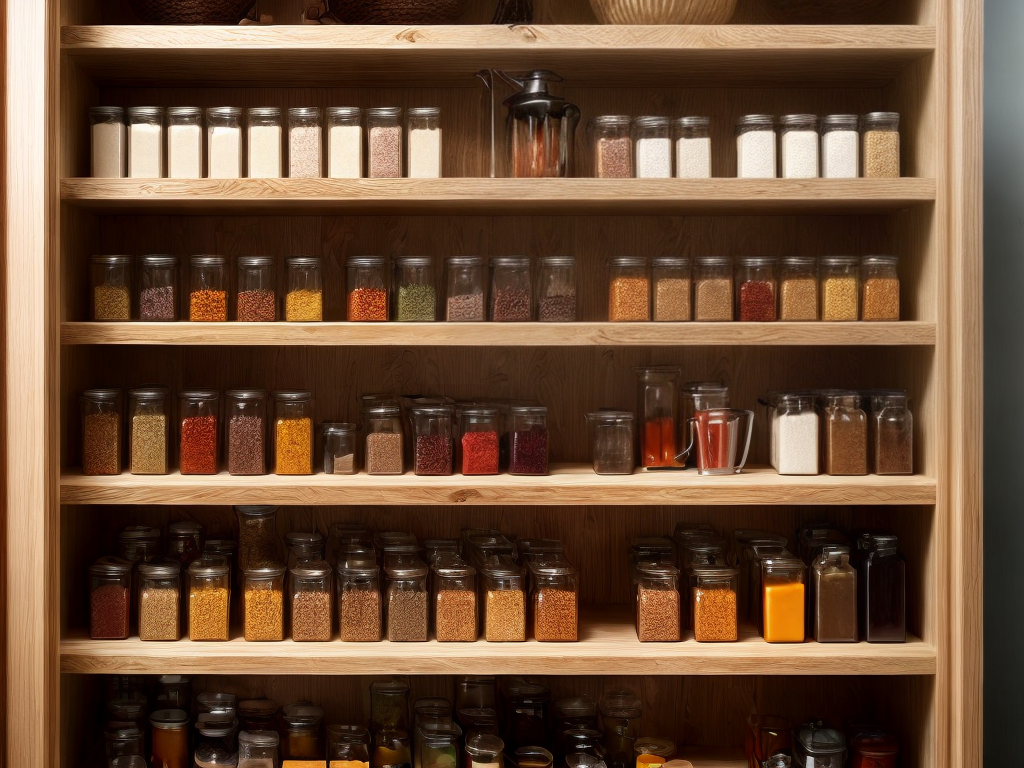
The fridge, a symbol of culinary possibilities, beckons me with its promise of efficient food storage. But as I stand before it, I realize I have no idea where to begin. How can I maximize space, minimize waste, and ensure my meals stay fresh and delicious throughout the week? With a few essential tools, proper planning, and the right storage techniques, I can conquer the world of meal prep and revolutionize my approach to cooking. So, let’s dive in and discover the secrets of efficient food storage together.
Benefits of Meal Prep
Meal prep offers numerous benefits that make it a game-changer for anyone looking to save time, eat healthier, and stay on track with their nutrition goals. Whether you’re trying to lose weight or simply maintain a busy schedule, meal prep can be a lifesaver.
Firstly, meal prep is a great tool for weight loss. By planning and preparing your meals in advance, you have better control over portion sizes and the ingredients you use. This allows you to make healthier choices and avoid impulse eating. Additionally, meal prepping helps you avoid the temptation of unhealthy takeout or fast food when you’re pressed for time.
Speaking of time, meal prep is a fantastic solution for busy schedules. Spending a few hours on the weekend to plan and prepare your meals for the week can save you a significant amount of time and stress during the weekdays. Instead of scrambling to put together a meal after a long day, you can simply grab a pre-prepared meal from your fridge or freezer and enjoy a nutritious and satisfying meal in minutes.
Essential Tools for Efficient Food Storage
To efficiently store your pre-prepared meals, there are several essential tools that can help you maximize freshness and minimize waste. Investing in efficient food storage containers is key to keeping your meals fresh and tasty for longer periods of time. These containers come in various shapes and sizes, allowing you to portion and store your meals conveniently. They are often made of durable materials such as glass or BPA-free plastic, which are both microwave and dishwasher safe.
In addition to efficient food storage containers, there are several meal prep hacks that can further enhance your food storage experience. One such hack is using compartmentalized containers, which allow you to separate different components of your meal, preventing them from mixing together and compromising their flavors. Another useful tool is a vacuum sealer, which removes the air from the container, creating an airtight seal and prolonging the freshness of your meals. Finally, labeling your containers with the date and contents can help you keep track of what you have stored and ensure that you consume your meals in a timely manner.
Planning Your Meals and Ingredients
When planning your meals and ingredients, it’s important to consider your dietary needs and preferences, as well as the shelf life of the ingredients. Here are four key steps to help you effectively plan your meals and make efficient grocery shopping decisions:
-
Set your meal planning goals: Determine the number of meals you want to prep for the week and identify any specific dietary requirements or preferences you have. This will help guide your ingredient choices and ensure you stay on track.
-
Create a meal schedule: Plan out your meals for the week, including breakfast, lunch, dinner, and snacks. Consider incorporating a variety of proteins, vegetables, fruits, and grains to ensure a well-balanced diet.
-
Make a detailed grocery list: Based on your meal schedule, create a comprehensive grocery list of all the ingredients you need. Organize the list by sections such as produce, meat, pantry items, and dairy to make your shopping trip more efficient.
-
Check your pantry and inventory: Before heading to the store, take stock of the ingredients you already have on hand. Cross-reference them with your meal schedule and grocery list to avoid buying duplicates and reduce food waste.
Preparing and Cooking in Bulk
When it comes to preparing and cooking in bulk, there are a few key points to consider. First, batch cooking can be a great way to save time and ensure you always have meals on hand. Additionally, investing in storage containers and organizing them properly can make the process even more efficient.
Batch Cooking for Efficiency
For maximum efficiency, I recommend utilizing the method of batch cooking to prepare and cook meals in bulk. Here are some batch cooking tips to help you get started:
-
Plan your meals: Before you begin batch cooking, create a meal plan for the week. This will ensure that you have all the necessary ingredients and avoid wasting food.
-
Choose recipes wisely: Opt for recipes that can easily be scaled up and freeze well. Soups, stews, casseroles, and stir-fries are great options for batch cooking.
-
Invest in quality storage containers: To keep your meals fresh and organized, invest in a set of durable, airtight containers. Glass containers are recommended as they can be used in both the oven and microwave.
-
Label and date your meals: To avoid confusion, label each container with the name of the dish and the date it was prepared. This will help you keep track of the freshness of your meals.
Batch cooking is a game-changer when it comes to meal prep. With these tips, you’ll be able to save time, money, and stress in the kitchen while enjoying delicious homemade meals throughout the week.
Storage Containers and Organization
To efficiently store and organize your prepared meals for bulk cooking, invest in high-quality storage containers. Proper storage containers are essential for maintaining the freshness and quality of your meals. There are various storage container options available, including glass containers, plastic containers, and meal prep containers. Glass containers are durable, non-toxic, and can be easily reheated in the oven or microwave. Plastic containers are lightweight, affordable, and come in a variety of sizes. Meal prep containers are specifically designed with compartments to separate different types of food. When choosing storage containers, consider the size and shape that will maximize fridge space. Utilizing stackable containers and labeling them with the date and contents will help you stay organized and easily locate meals when needed.
Proper Storage Techniques
In order to maintain the freshness and quality of your meals, it is essential to employ proper storage techniques. Here are four key tips to help you with proper food handling and prevent food spoilage:
-
Temperature Control: Keep perishable foods, such as meats, dairy, and leftovers, at a safe temperature. Refrigerate them promptly at or below 40°F (4°C) to slow down bacterial growth. Use a refrigerator thermometer to ensure the temperature is accurate.
-
Air-Tight Containers: Store your prepped meals in air-tight containers to minimize exposure to air and moisture, which can lead to spoilage. Glass or BPA-free plastic containers with tight-fitting lids are ideal for maintaining freshness.
-
Labeling and Dating: Properly label and date your containers to keep track of the freshness. This will help you identify older meals that need to be consumed first, reducing waste and ensuring optimal taste.
-
Storage Organization: Arrange your meals based on their expiration dates. Place the oldest meals at the front so they are easily accessible and consumed first. This rotation system helps prevent forgotten meals from spoiling.
Tips for Successful Meal Prep Routine
When it comes to successful meal prep, there are a few key tips to keep in mind. First, utilizing time-saving meal prep techniques can help you maximize your efficiency in the kitchen. Second, organizing your meal plan for the week can ensure that you have all the necessary ingredients and avoid last-minute scrambling. Lastly, proper food storage methods are crucial in maintaining the freshness and quality of your prepped meals.
Time-Saving Meal Prep Techniques
For a successful meal prep routine that saves you time, consider implementing these time-saving meal prep techniques:
-
Plan your meals in advance: Take some time each week to plan out your meals for the upcoming days. This will help you stay organized and ensure that you have all the necessary ingredients on hand.
-
Prep ingredients in bulk: Instead of chopping vegetables every day, spend some time on your meal prep day to chop and portion out your ingredients in advance. This will save you time during the week when you’re actually cooking.
-
Cook in batches: Make large batches of your favorite recipes and portion them out into individual servings. This way, you’ll have ready-to-eat meals throughout the week without having to spend time cooking every day.
-
Invest in storage containers: Having a good set of storage containers will make your meal prep routine much easier. Look for containers that are microwave-safe, dishwasher-safe, and stackable for easy storage.
Organizing Your Meal Plan
To effectively organize your meal plan for a successful meal prep routine, start by creating a weekly schedule that outlines your meals and ingredients. This will help you stay organized and ensure that you have all the necessary ingredients on hand. When planning your meals, consider incorporating a variety of flavors and cuisines to keep things interesting. Look for meal planning tips and meal prep recipes online or in cookbooks to get inspiration and ideas. It’s also important to take into account your dietary preferences and any specific nutritional goals you may have. By planning ahead and creating a schedule, you’ll be able to streamline your meal prep process and save time in the kitchen.
Proper Food Storage Methods
What are the best methods for proper food storage to ensure a successful meal prep routine? Proper food storage is essential for maintaining food safety and ensuring the quality of your prepped meals. Here are four best practices to follow:
-
Use airtight containers: Invest in high-quality containers that seal tightly to prevent air and moisture from entering, which can lead to spoilage and bacterial growth.
-
Label and date your meals: Keep track of when each meal was prepared and stored to ensure you consume them within a safe timeframe. This helps prevent foodborne illnesses.
-
Store raw and cooked foods separately: To avoid cross-contamination, store raw meats, poultry, and seafood in separate containers from cooked foods. This prevents the spread of harmful bacteria.
-
Utilize proper temperature control: Store perishable items in the refrigerator at or below 40°F (4°C) and frozen foods at or below 0°F (-18°C) to maintain their freshness and prevent bacterial growth.
Following these food storage best practices will help you maintain the safety and quality of your prepped meals, allowing you to enjoy delicious and healthy food throughout the week.
Conclusion
In conclusion, meal prep is a great way to save time and money while ensuring that you have healthy and delicious meals readily available. By investing in essential tools for efficient food storage and planning your meals and ingredients, you can easily prepare and cook in bulk. Proper storage techniques will help maintain the freshness of your meals for longer periods. With a successful meal prep routine, you can enjoy the benefits of convenience and healthy eating.
